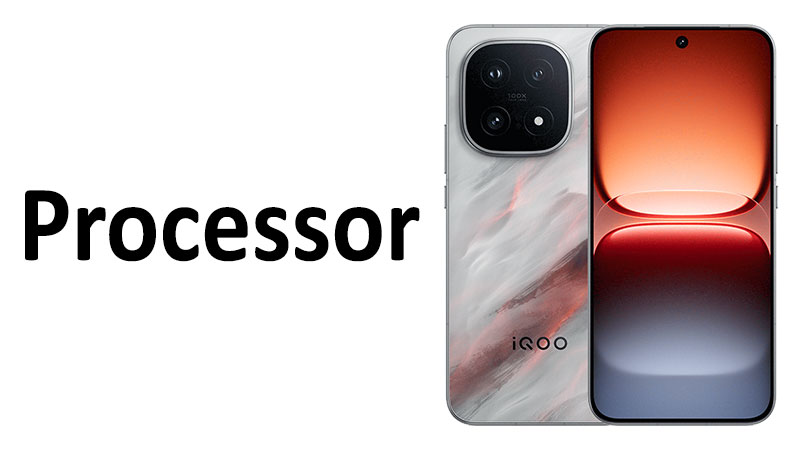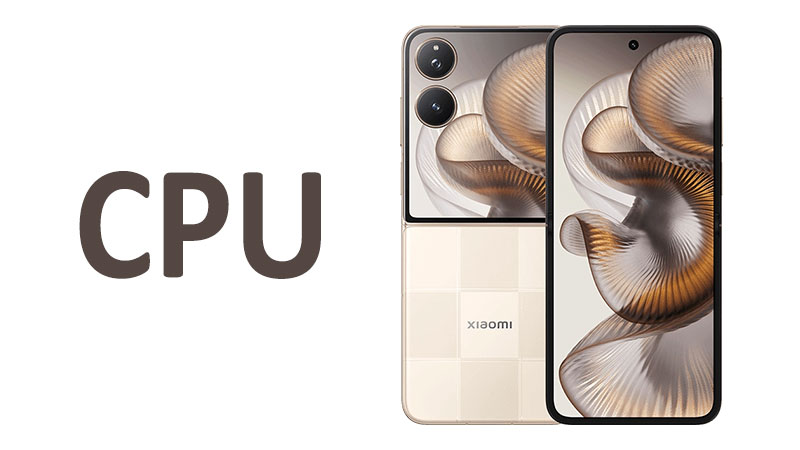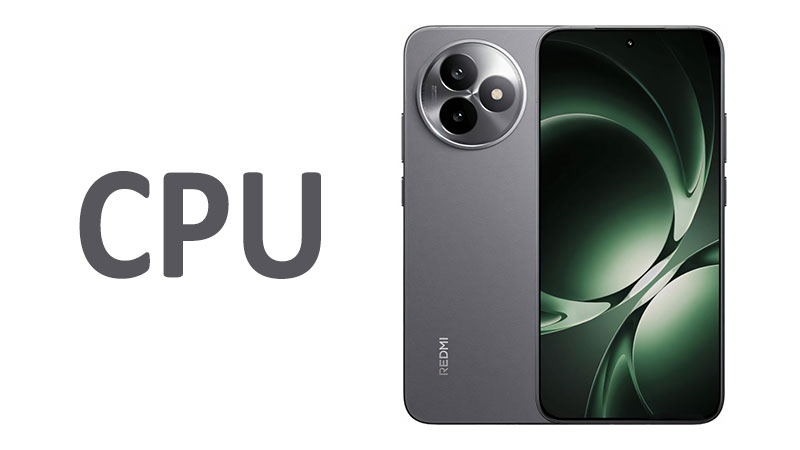The vivo iQOO 15 processor is the central nervous system of this powerful flagship device. It determines everything from app launch speed to sustained gaming frame rates. A powerful mobile chipset is critical for a truly premium smartphone experience. The iQOO 15 utilizes the cutting-edge Qualcomm SM8850-AC Snapdragon 8 Elite Gen 5. This chipset is built on a highly advanced 3 nanometer (nm) manufacturing process. This article provides a comprehensive review of this processor. We will analyze the CPU structure and the powerful Adreno 840 GPU. Understanding these components is essential for evaluating the phone’s overall performance potential.
Chipset Foundation: Snapdragon 8 Elite Gen 5 Architecture
The core of the vivo iQOO 15’s performance lies in the Qualcomm SM8850-AC Snapdragon 8 Elite Gen 5. This is the top-tier mobile platform available from Qualcomm. The “Elite” designation suggests specialized tuning for superior clock speeds and thermal management. This chipset is a System-on-a-Chip, or SoC. It integrates the CPU, GPU, and crucial connectivity modules onto a single, highly efficient die. The entire architecture focuses on maximizing both raw power and energy efficiency. This balancing act is vital for a high-performance device like the iQOO 15.
The 3 Nanometer Manufacturing Process
The Snapdragon 8 Elite Gen 5 is fabricated using an industry-leading 3 nanometer (nm) process. This minute manufacturing node is the most significant upgrade in mobile chip technology. The 3nm process allows engineers to pack exponentially more transistors onto the silicon. More transistors generally translate directly to higher computational power. Crucially, the smaller size also reduces the distance electrons must travel. This reduction dramatically lowers power consumption and improves overall efficiency. The 3nm process is key to providing sustained performance without overheating.
Improved Power Efficiency
The shrink from the previous generation’s 4nm or 5nm process provides substantial power savings. This efficiency is immediately noticeable in the phone’s battery life. The chipset consumes less energy while performing the same tasks. This means the iQOO 15 processor can run demanding applications longer. It does this without drastically draining the battery capacity. Efficiency improvements are just as important as speed gains in a mobile environment. They provide better thermal management and greater daily endurance.
Central Processing Unit (CPU) Deep Dive
The Central Processing Unit (CPU) handles all general computation and application logic. The vivo iQOO 15 processor uses a highly specialized Octa-core configuration. This non-traditional setup aims to optimize performance for gaming and heavy multitasking. The CPU features a unique 2+6 core arrangement. This deviates from the common 1+X+Y core configurations seen in past models. The core structure is engineered for aggressive speed and sustained load management.
The Oryon V3 Phoenix High-Performance Cores
The iQOO 15 CPU utilizes two dedicated Oryon V3 Phoenix L cores clocked at an impressive 4.6 GHz. These are the phone’s primary performance cores. They handle single-threaded bursts of power. This includes fast app opening, instant image processing, and rapid user interface response. The extremely high 4.6 GHz clock speed ensures zero hesitation. These powerful cores are essential for delivering the snappy, immediate feeling of a true flagship phone. They provide peak computational muscle when the user needs it most.
Single-Core Performance Benchmarks
The 4.6 GHz Oryon V3 Phoenix L cores deliver top-tier single-core benchmark scores. These scores are crucial for measuring responsiveness and raw application speed. Applications that are not fully optimized for multi-threading benefit significantly from this core speed. The iQOO 15 processor excels in these single-core intensive tasks. It surpasses many competitors, especially in initial application loading times. This makes the phone feel consistently quick and highly responsive.
The Oryon V3 Phoenix Mid-Cores
The remaining six cores are Oryon V3 Phoenix M cores, clocked at 3.62 GHz. These six cores manage the majority of heavy, sustained workloads. They are not traditional low-power efficiency cores. Instead, they function as high-performance mid-cores. They step in to handle multi-threaded tasks efficiently. This includes complex background processes, continuous system operations, and heavy web browsing. The 3.62 GHz clock speed maintains high performance without demanding excessive power. This configuration balances massive power with practical energy use.
Sustained Performance and Throttling
The 2+6 core structure is specifically beneficial for minimizing thermal throttling. When the two 4.6 GHz cores approach their thermal limit, the six 3.62 GHz cores sustain the workload effectively. This architecture allows the iQOO 15 to maintain high frame rates in extended gaming sessions. It does this while keeping the overall chip temperature stable. This sustained performance advantage is critical for a device targeting hardcore mobile gamers. The efficient core management ensures a smoother, more reliable experience.
Graphical Processing Unit (GPU) Capabilities
The vivo iQOO 15 relies on the powerful Adreno 840 for all graphical rendering tasks. The GPU is arguably the most critical component for mobile gaming and advanced multimedia processing. The Adreno series has a strong reputation for performance and optimization. The Adreno 840 represents the pinnacle of current mobile graphics technology. It is built to handle the most graphically demanding titles available today.
Raw Gaming Power with Adreno 840
The Adreno 840 GPU offers a huge leap in raw processing power over its predecessor. This translates directly to higher achievable frame rates in modern 3D games. It supports maximum resolution textures and complex lighting effects seamlessly. The GPU can easily push popular games to the screen’s maximum refresh rate. This ensures a fluid, lag-free visual experience for all compatible titles. The iQOO 15 is built to be a true portable gaming powerhouse.
Advanced Graphics Features: Ray Tracing
The Adreno 840 introduces enhanced support for hardware-accelerated ray tracing. Ray tracing is a highly complex rendering technique. It accurately simulates how light interacts with objects in a 3D environment. This results in far more realistic shadows, reflections, and ambient occlusion effects in games. While still nascent in mobile gaming, the Adreno 840 has the necessary hardware to utilize this feature. This capability ensures the iQOO 15 is ready for the next generation of mobile game graphics. It offers a visual fidelity boost that enhances immersion significantly.
Variable Rate Shading (VRS)
The GPU also supports advanced features like Variable Rate Shading, or VRS. VRS is a smart rendering technique that improves graphical performance efficiency. It allows the GPU to render the central, most visually important parts of the screen at full resolution. Simultaneously, it renders the peripheral or less-detailed areas at a lower shading rate. This technique conserves valuable processing power without reducing the perceived visual quality. VRS helps the Adreno 840 maintain high frame rates while consuming less energy.
Specialized Comparisons: Generational and Competitive
Understanding the iQOO 15 processor requires placing it in context. We must compare its performance against its direct predecessor and key rival chipsets. This comparative analysis highlights the significance of the Snapdragon 8 Elite Gen 5 upgrade.
iQOO 15 vs. iQOO 14 Processor
The previous generation, the iQOO 14, likely featured the Snapdragon 8 Gen 4 or a similar high-end chip. The jump to the Snapdragon 8 Elite Gen 5 (3 nm) is substantial. The primary difference lies in the architectural foundation. The new 3nm process provides a significant double-digit percentage gain in both efficiency and performance. The CPU core speeds are noticeably higher, particularly the 4.6 GHz Oryon V3 Phoenix L cores. The Adreno 840 GPU also delivers a measurable increase in graphical rendering speed. The iQOO 15 provides a clear and necessary generational leap in power and efficiency.
iQOO 15 vs. Rival Chipsets (Apple and MediaTek)
The Snapdragon 8 Elite Gen 5 directly competes with the latest flagship chipsets from Apple and MediaTek. Apple’s latest A-series chip traditionally holds an advantage in single-core performance. However, the 4.6 GHz Oryon V3 cores significantly narrow this gap. In sustained multi-core performance, especially under load, the Snapdragon 8 Elite Gen 5 is highly competitive. MediaTek’s flagship Dimensity chipset is typically a strong rival in overall efficiency. However, the Adreno GPU often has superior optimization and driver support in the mobile gaming ecosystem. The iQOO 15 processor holds its own as a top-three contender for overall mobile performance dominance.
Performance in Key Usage Scenarios
The power of the vivo iQOO 15 processor translates into concrete benefits across all types of mobile usage. Its efficiency and speed are felt in every interaction.
Mobile Gaming Performance
The iQOO series is known for its gaming focus. The Snapdragon 8 Elite Gen 5 and Adreno 840 combo deliver uncompromising gaming performance. High-frame-rate titles run smoothly at peak settings. The superior thermal efficiency ensures minimal performance drops even after one hour of continuous play. The processor handles complex game physics and large online environments effortlessly. This makes the iQOO 15 a reliable tool for competitive mobile esports enthusiasts.
Photography and Computational Imaging
The processor contains a sophisticated image signal processor, or ISP. This ISP works in tandem with the main CPU and GPU. It processes massive amounts of image data instantly after the shutter clicks. The Snapdragon 8 Elite Gen 5 enables advanced computational photography features. This includes instantaneous high dynamic range (HDR) processing and complex noise reduction algorithms. The chip’s high power allows the phone to capture 8K video at high frame rates smoothly. It also enables high-resolution stills in challenging lighting conditions.
Artificial Intelligence (AI) and Machine Learning (ML)
The chipset includes a dedicated neural processing unit, or NPU. The NPU accelerates artificial intelligence and machine learning tasks. This is crucial for modern features like smart photo organization and predictive text input. It also powers advanced language models directly on the device. The powerful NPU ensures that the iQOO 15 handles all AI-driven software features instantly. It performs these complex computations with exceptional power efficiency.
Processor Pros and Cons: A Balanced View
The Snapdragon 8 Elite Gen 5 is an engineering marvel. However, no chipset is entirely without its potential drawbacks. A potential buyer must weigh the significant advantages against the common trade-offs.
Key Advantages (Pros)
Unprecedented Raw CPU Speed
The 4.6 GHz Oryon V3 Phoenix L cores provide top-tier single-core performance. This leads to immediate application responsiveness and quick application launches.
Cutting-Edge Manufacturing
The 3nm process delivers superior power efficiency and helps manage thermal output effectively. This prevents excessive heat generation during heavy use.
Exceptional Gaming Graphics
The Adreno 840 GPU handles all current high-fidelity games with ease. It also introduces hardware support for advanced features like ray tracing.
Superior Sustained Performance
The unique 2+6 core configuration is specifically designed to manage sustained load. This minimizes the performance dips caused by thermal throttling over time.
Future-Proof Technology
The advanced core architecture and 3nm node ensure the processor remains highly capable for the next three to four years. It future-proofs the phone against rising software demands.
Potential Drawbacks (Cons)
Power Consumption at Peak Load
The extremely high 4.6 GHz clock speed requires high power delivery at peak performance. This can lead to rapid battery drain during intense, short bursts of usage.
Thermal Management Necessity
Despite the 3nm efficiency, the extreme power of this chipset still requires active cooling. The phone’s cooling system must be robust to maintain peak performance without overheating.
Premium Device Cost
Integrating the Snapdragon 8 Elite Gen 5 is highly expensive for the manufacturer. This cost is passed on to the consumer, making the iQOO 15 a premium-priced device.
Driver and Optimization Dependence
Full utilization of the Adreno 840’s advanced features, like ray tracing, depends on software updates. It also requires specific optimization from game developers.
Buyer’s Guide: Important Processor Knowledge
A user choosing the vivo iQOO 15 must understand how software and cooling interact with the powerful hardware. The processor’s full potential depends on these system-level components.
Thermal Management System
The buyer should investigate the phone’s specific cooling solution. The Snapdragon 8 Elite Gen 5 needs an advanced thermal system, such as a large vapor chamber. A high-quality cooling system is necessary for preventing thermal throttling. Without adequate cooling, the processor will reduce its clock speeds to protect itself. This results in noticeable performance dips during long gaming sessions. A great cooling system unlocks the full, sustained potential of the 4.6 GHz cores.
vivo’s Software Optimization (Funtouch/OriginOS)
vivo’s custom operating system, such as Funtouch OS or OriginOS, plays a major role. The software must be finely tuned to manage the processor’s cores efficiently. Good software optimization directs tasks to the correct cores (L or M). It also minimizes background processes that waste power unnecessarily. Buyers should look for software reviews that confirm efficient core management and resource allocation. This optimization ensures a smooth, fluid user experience at all times.
Longevity and Performance Degradation
The 3nm architecture suggests excellent performance longevity. However, all chipsets eventually slow down relative to newer models. The iQOO 15 processor is built to resist performance degradation well. Its vast power headroom means the phone will handle future apps longer than its predecessors. Buyers can expect the iQOO 15 to remain a top performer for at least three years. The hardware is genuinely future-proofed against typical software advancements.
Conclusion
The vivo iQOO 15 processor, the Qualcomm Snapdragon 8 Elite Gen 5, is an absolute technological powerhouse. Its 3nm fabrication process delivers industry-leading efficiency and speed. The unique Octa-core CPU, featuring the two 4.6 GHz Oryon V3 Phoenix L cores, ensures unmatched single-threaded responsiveness. The six 3.62 GHz Oryon V3 Phoenix M cores provide excellent stability for sustained, heavy workloads. Furthermore, the Adreno 840 GPU offers elite graphical performance. It is ready for the next generation of mobile gaming with ray tracing support.
This chipset is built for users who demand the very best performance. It caters directly to competitive gamers, professional content creators, and extreme multitaskers. While this high-end power comes at a premium cost, the performance gains are significant. The iQOO 15 offers a processing platform that stands shoulder-to-shoulder with the best in the market. Its architecture promises both immediate speed and long-term relevance. For the user seeking an uncompromising mobile experience, the iQOO 15 processor delivers on all counts.
FAQ
What manufacturing process does the iQOO 15 processor use?
The vivo iQOO 15 processor uses an advanced 3 nanometer (nm) manufacturing process. This small size increases efficiency significantly.
What is the maximum clock speed of the iQOO 15 CPU?
The maximum clock speed of the CPU is 4.6 GHz. This speed is achieved by the two high-performance Oryon V3 Phoenix L cores.
Does the Adreno 840 GPU support ray tracing?
Yes, the Adreno 840 GPU includes hardware acceleration for ray tracing. This feature improves visual fidelity in compatible games.
How does the 2+6 core configuration benefit the user?
The 2+6 core setup provides superior sustained performance. It allows the efficient cores to maintain speed when the high-performance cores are at their thermal limit.
Is this chipset better for gaming or general tasks?
The chipset excels at both. The Adreno 840 is outstanding for gaming. Meanwhile, the 4.6 GHz CPU cores ensure fast and fluid general application usage.



